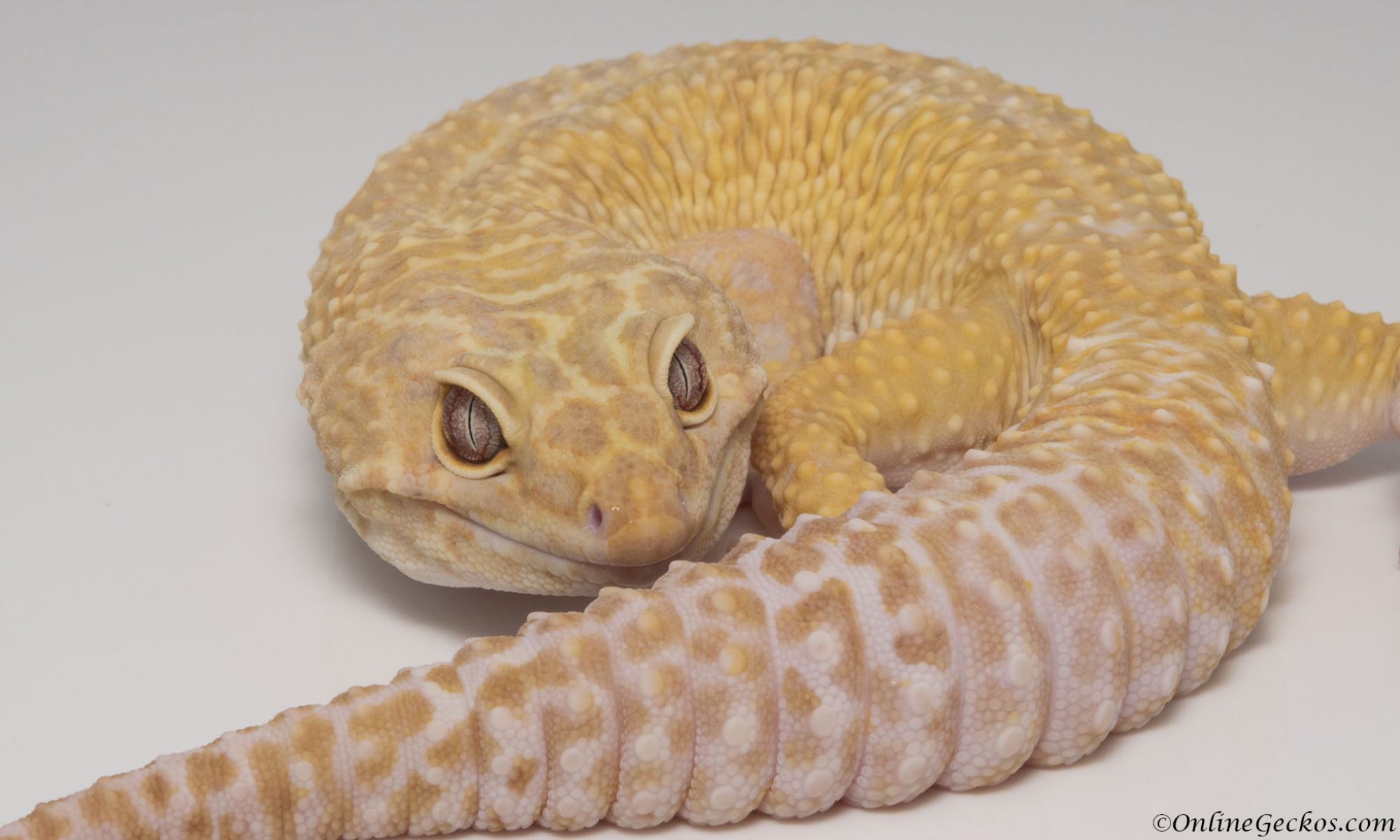Leopard gecko breeding seasons usually start around January of each year, and they last through June/July. During the breeding season, your female leopard geckos will ovulate. In this article we will show you how to spot leopard gecko ovulation. We will also explore changes in behavior from both male and female leopard geckos. You will learn what to expect during the leopard gecko breeding season, as well as the normal cycles your geckos go through each year.
Leopard Gecko Ovulation – What do they look like
During the leopard gecko breeding season, female leopard geckos will produce ovum, the female reproductive cell. Ovum (plural ova) tends to start as a small pink round dot near their stomach in the middle of their abdomen. Ovum can be hard to spot at first, as they blend in with their stomach. See the picture below for an early stage ovulation.

Ovum can be fertilized by a male leopard gecko. Once fertilized, eggs will form from the ova. It’s important to note that female leopard geckos can develop eggs without being fertilized. This is why it’s important for you to provide proper husbandry and to make sure your female leopard geckos have a place to dig and lay their eggs. Read our temperature and husbandry guide for details.
The Zilla Decor Rock Lair is one of our top choices for female moist-hide/laybox. Exo Terra Gecko Cave is another quality gecko hide female leopard geckos really enjoy. Use Zoo Med Eco Earth coconut fiber as the moist-hide/laybox substrate. You will ensure your female leopard geckos have a place to dig and lay eggs if they need to. Failure to provide a good laybox for females could result in egg-binding, as we discussed in My Leopard Gecko Won’t Eat article.
Leopard Gecko Ovulation – Fertilized ovum
Once the ovum is fertilized, they will be moved down to leopard gecko’s lower abdomen (both left & right sides) where eggs are developed. See the example below, this ovum is larger and more developed, getting settled in this gecko’s lower abdomen.

Leopard Gecko Breeding Season – Changes in behavior
During the breeding season, both male and female leopard geckos will lose appetite. Most leopard geckos will stop feeding randomly for weeks or months at a time, and this is completely normal for them. The fat stored inside their tails are used by their bodies once they stop feeding.
Females tend to lose appetite based on their ovulation cycles. Females can develop infertile eggs without ever being bred, so any females could lose appetite during the breeding season. Usually once a female has laid a clutch of eggs, she will want to feed for a few days before she stops feeding again. Clutches of eggs are laid roughly 2 weeks apart, to give you an idea of their cycles. Females carrying eggs may not want to be held, so they may become more skittish if they have eggs developing inside them.
Males tend to become more restless and outgoing during the breeding season. They may feed less or go off food completely as well. Males will want to come out all the time, because the breeding season is their time to look for mates. They are usually not aggressive towards handling, but they may nibble at you if they mistaken your hand for a female.
Leopard Gecko Breeding Season – Supplements
When leopard geckos fast through a breeding season, they are not eating therefore they are not getting any nutrients in their bodies. This is fine, but we like to provide supplements to our females since they will be producing eggs. During the breeding season, we leave a bottle cap full of Zoo Med Calcium with D3 to give extra calcium to our breeding leopard geckos.
Egg production is very draining on their bodies. Extra calcium will help females lay healthy eggs. Remember even if your female isn’t getting bred, she could still develop and lay infertile eggs. We provide Zoo Med Calcium with D3 to both male & females during the breeding season.
Leopard Gecko Ovulation – During the first year
When leopard geckos are under 1 year old, they function on a different cycle. Females will ovulate between 8 – 12 months old. Males will hit puberty and become sexually mature between 6 – 8 months old. During this time, you will observe loss of appetite and restlessness from both male and female leopard geckos.
Leopard geckos will start to follow the yearly breeding cycles (January – June/July) after the first year. During their first year, they will become sexually mature based on age. It’s important to understand their cycles so you know what to expect.
Leopard Gecko Breeding Cycles
The question “my leopard gecko won’t eat” is always a top concern from gecko hobbyists. Understanding leopard gecko breeding cycles is key to have peace of mind. It’s normal for you to feel stressed when your pet stops eating. But unlike dogs and cats, not feeding is a normal cycle for leopard geckos. Once you understand this, you should feel at ease the next time your leopard gecko stops feeding.
Not all leopard geckos will stop feeding during the breeding season. The duration for when they do go off food also varies. Every gecko is unique, you should learn how your leopard gecko behaves and treat them accordingly. When in doubt, go through our checklists in our “My leopard gecko won’t eat” article to see if your husbandry needs to be improved, or if your leopard gecko is ill.

